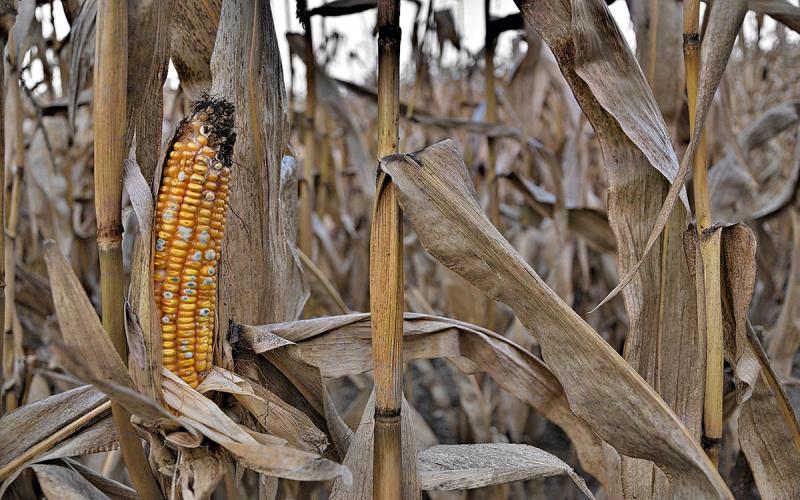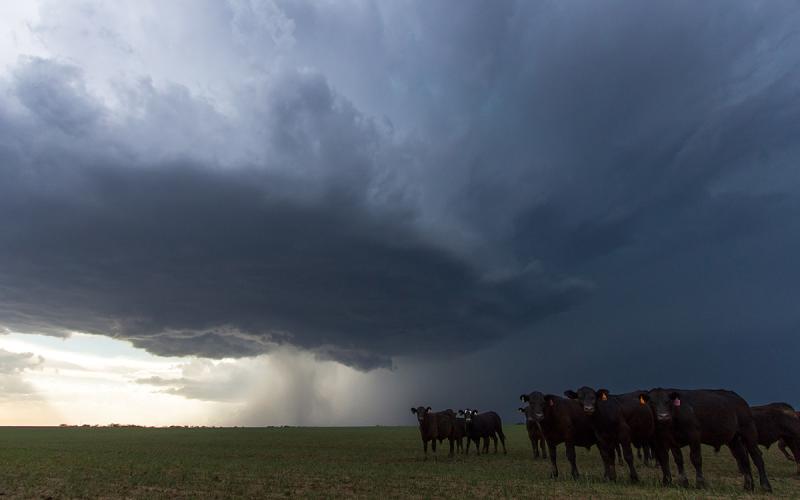Cold weather is not just hard on the people taking care of animals, it can be tough on the animals themselves. Consider respiratory disease (pneumonia) in dairy calves. It’s not just our imagination that cold temperatures often bring with them an increase in sick calves; there are physiologic reasons why cold weather increases the risk of respiratory disease.
Cold weather enhances the growth of certain respiratory germs on the inside of a calf’s nose and upper respiratory tract. The more bacteria present in the upper respiratory tract, the more likely they’ll reach the lower lung and cause pneumonia. Cold weather also thickens up mucus and impairs the work of the “ciliary escalator” – the fine hair-like cell structures that sweep bacteria and foreign material from the lower airways up to the throat to be coughed up. All these factors increase the risk of pneumonia in calves.
Detection & Prevention
Previous articles covering respiratory disease in dairy calves outline respiratory disease prevention strategies . The articles remind us of the importance of fresh air in calf barns through proper ventilation – a goal that can conflict with efforts to protect calves from cold temperatures. Providing deep dry bedding and adequate nutrition are important strategies to help calves deal with cold temperatures.
Risks: The increased risk of respiratory disease following cold weather should prompt caretakers to tune in even more to the health of their calves. Early detection and treatment is important to the calf’s immediate health as well as to her long-term production. Evidence suggests that cows who were treated more than once for respiratory disease as calves produce 10% less milk in their first lactation, and 15% in their second lactation. These effects on milk production have not been demonstrated in calves only treated once, underlining the importance of effective and timely treatment. Heifers that suffered pneumonia as calves are older on average at first calving compared to heifers that did not get sick.
Antibiotic Treatments
Antibiotics effective against Mannheimia, Histophilus, and Pasteurella are the hallmarks of calf respiratory disease treatment. Many drugs (available by prescription through veterinarians) have demonstrated effectiveness against respiratory pathogens. As there is not a single drug that has proven effective in every situation, antibiotic choice should be guided by veterinary consultation and, if available, bacterial culture and antibiotic sensitivity results from previous calves. Using nasal swabs to identify pathogens and guide treatment should be approached with caution, but may be informative in some cases. Lung cultures from calves that have succumbed to pneumonia may be more useful, but their representativeness for future calf groups should be considered carefully.
Pneumonia and other infections caused by Mycoplasma bovis are particularly difficult to treat. Antibiotics labeled for Mycoplasma should be utilized and treatment length may need to be prolonged. Identifying Mycoplasma through lab testing is a valuable piece of information that can help inform treatment and prognosis.
Supportive Care
Supportive care through anti-inflammatory medications, injectable vitamin supplements, and oral electrolytes can also prove valuable in helping an ill calf deal with pneumonia. In outbreaks, veterinarians may recommend intranasal vaccine use to enhance the immune response. Providing extra bedding and calf coats to sick calves will help them maintain their body temperature. Milk should not be withheld from sick calves, as energy and protein is necessary for them to respond to the infection. Breaking the required daily feeding into smaller amounts given more frequently may help calves with lung problems “catch their breath” more easily during feeding.
In Summary
When prevention efforts fail, early detection and effective treatment of respiratory disease can improve the odds of a calf surviving respiratory disease as well as their productivity as a cow. Work with your veterinarian to improve these aspects of your operation, and pay close attention to calves when cold winter temperatures settle in.
References:
- Morrison S., Scoley G., Barley J. (2013). The impact of calf health on future performance. Vet Ireland J. 3(5):264-268.
- Rossini K. (2004). Effects of calfhood respiratory and digestive disease on calfhood morbidity and first lactation production and survival rates. MS Thesis. Virginia Tech Univ., Blacksburg.


